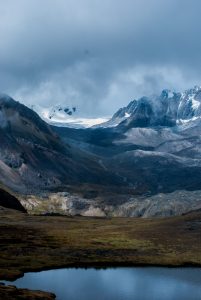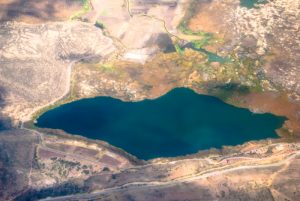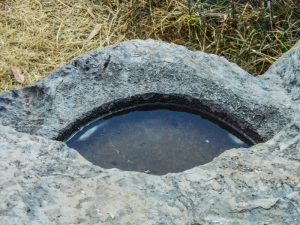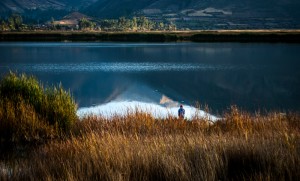The Life and Conflict of Peru, Water

Rain has come to Cuzco. Water falls from the sky and the land is transformed. The hills and mountains turn green, fields sprout with life, and flowers return to bloom. It is a magical time, although for the people of Cuzco the time of rain is also called “winter”. To the meteorologists is might be officially summer, but the people worry about the chill from rain and the fear of illness.
Nevertheless, water abounds. It flows freely from the hills, or sprouts from tubes and cougars mouths whose base may have been built in Inca times. Often people do not even know where the water comes from.

Classical Andean religion worshipped water. You can see it in the devotion to the Ocean at Pachacamac, a massive temple complex–now in ruins–on the Pacific coast south of Lima, or in the Island of the Sun on Lake Titicaca. In the last the sun is born and in the latter it sets.
The chronicler Betanzos notes that on Lake Titicaca the creator God made human life. He then destined the people he made of stone to come from caves and springs throughout the Andes. Each of those caves and springs is an origin point, a holy place of beginning for the people of this or that community.
While the official mythology tells of the Ayar sisters and brothers coming from a cave at Tambo Tocto, and another version has the holy couple Mama Ocllo and Manco Capac coming from Lake Titicaca, there is also a local spring in Cuzco that gathers holiness.

Now part of the massive and wondrous Cathedral that rises up steps like a pyramid from the main sqare, the Plaza de Armas, the spring is found at the back of the building, under a wall and an altar. Today only the name of the altar tells you it is there. The shrine is to the Lord of Unupuncu, a Semi-submerged Christ rising with his cross from the water.

Unu-puncu means “water gate” or “water door”. In a way, this place is paired with Wayra-puncu way up the hillside. Wayra means wind, so this is the gate or door of wind. Though a residential area now, with houses rising up the hillside, Wayra-puncu still shows its holiness in the many earth shrines, huacas, near it or in it.
The wind brings the rain, and so there is a door above for the wind and rain to come, and a door on the plaza to access the underground springs and water.
The Church has closed off the actual access point to the water through which people made offerings to its aqueous depths, to try to force the focus to lie on the image of Christ. Nevertheless, people will tell you that the gate to the water underground is there, and they will describe the Christ in its terms.
Water falls and flows. It grows in streams to fill the Huatanay River, which then flows into the Vilcabamba. That massive River gathers ever more liquid as it rushes down hill to the jungles where, after joining other large rives, flows into the Amazon.

The jungles which even today are associated with water, were in pre-Spanish times considered a land of the ancestors and related to origins, just like the small lakes of water high on the mountains’ tops. Andeans live in a world in which the movement of water from top to bottom and back to the top is basic to grasping life.
As a result, it is not surprising that some of the most important recent conflicts in Peru have been over international mining companies attempts to remove mountain lakes to mine gold or other minerals. If the circulation of water keeps the Andean world moving metaphysically, gold and other minerals arguably keep the capitalist world afloat.
Native communities, whether in the north where a Colorado Based mining company threatens a mountain lake to remove deposits of gold, or in the South where a multinational consortium threatened Cerro Khapia, the highest peak near the Peninsula of Copacabana which is a gateway to the Island of the Sun. From Khapia are said to come the waters that rain on the Peninsula and hence a much larger area around the lake. An uprising of local people caused the Peruvian government to remove the consortiums license to mine on Khapia and to make it a protected zone.

Mining is not the only threat to water. Besides pollution, water is threatened by global warming. Glaciers are drying up, and the highland lakes are shrinking.
Besides having metaphysical meaning as places of origin and bases which anchor climate and life, the lakes and reservoirs are main sources of water for the cities and towns of highland Peru. As they dry up and the population continues to grow, people grow concerned that in the near future there may no longer be enough water in this land that still worships it.
But for now the rains are coming. The great Lord of Miracles will be celebrated on the Pacific Coast. Maria Rostworowski, the great Andean ethnohistorian, holds he is the continuity of the Lord of Pachacamac, the Lord on the ocean’s edge. His massive procession and devotion will move masses on the coast and throughout Peru, even in the highlands of Cuzco where people will dance Marinera in his honor. The worship of water continues.




